28 Apr / A Palestine Reader, Part I: Books for Youth [in The Booklist Reader]

 The unrelenting conflict between Palestine and Israel keeps the Middle East in the news. But for a fuller picture of the Palestinian and Palestinian American experience than what the media can provide, here’s a starter reading list for young people.
The unrelenting conflict between Palestine and Israel keeps the Middle East in the news. But for a fuller picture of the Palestinian and Palestinian American experience than what the media can provide, here’s a starter reading list for young people.
Stay tuned for our list of titles about Palestine for adults and, as always, please add your suggestions in the comments.
Picture Books
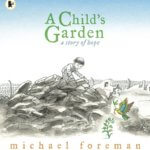 A Child’s Garden: A Story of Hope by Michael Foreman
A Child’s Garden: A Story of Hope by Michael Foreman
In “a place of ruin and rubble,” a young boy discovers a tiny green shoot next to a fence. With the boy’s nurturing, the plant grows into a magnificent grapevine that provides shelter and joy to children, birds, and butterflies. “Then, one day, soldiers came and destroyed everything.” The boy mourns, but spring returns with new shoots, this time growing on both sides of the fence. Although geography remains unnamed, the illustrations (and multiple reviews/discussions) strongly indicate the setting to be a Palestinian / Israeli border. The message is clear: children will find the path to peace.
 Sharing Our Homeland: Palestinian and Jewish Children at Summer Peace Camp by Trish Marx, photographs by Cindy Karp
Sharing Our Homeland: Palestinian and Jewish Children at Summer Peace Camp by Trish Marx, photographs by Cindy Karp
Real-life kids from both sides of religious/political/historical borders enjoy a camp where “they will have the chance to meet and come together—not as enemies, but as campers, as children, and maybe as friends.” Alya lives in the Arab village of Meiser in north-central Israel; she and her Muslim family are Israeli Palestinians. Yuval, a young Jewish boy, lives in the Jewish community of Maor just a short distance from Meiser. For two weeks, children “who live in the midst of this ongoing conflict” gather, hoping for friendship and learning to respect one another.
Middle Grade
 The Cat at the Wall by Deborah Ellis
The Cat at the Wall by Deborah Ellis
Clare, from Bethlehem, Pennsylvania, is an example of why texting while crossing the street can be fatal. She died as a 13-year-old girl, but comes back to the “real” Bethlehem—in Palestine—as a cat. She finds herself inside a Palestinian home where she notices a little boy hiding from two Israeli soldiers who have taken over the house; she saves the boy’s life by helping the soldiers. Volatile as the situation is, Ellis remains neutral, presenting the Israeli / Palestinian conflict to younger readers with clarity and empathy.
 Samir and Yonatan by Daniella Carmi, translated by Yael Lotan
Samir and Yonatan by Daniella Carmi, translated by Yael Lotan
Samir, a young Palestinian boy, must go to the “Jews’ hospital” for knee surgery. Having just lost his younger brother to crossfire, Samir is understandably anxious about entering what he sees as enemy territory. Waiting for the American doctor, he lies in a children’s ward with four other injured children: abused Razia, ethereal Ludmilla, rambunctious Tzahi, and intriguing Yonatan. While waiting to recover, Yonatan helps Samir resolve his anguished feelings about his murdered brother.
 The Shepherd’s Granddaughter by Anne Laurel Carter
The Shepherd’s Granddaughter by Anne Laurel Carter
Here’s an example of polarized reactions to a book: banned and boycotted by some, while honored in at least eight award programs, including the Canadian Library Association’s Book of the Year for Children. Additionally, a portion of the book’s royalties is donated to the Children in Crisis Fund of IBBY, the International Board on Books for Young People. Amani, the youngest daughter in her extended Palestinian family, wants to be a shepherd just like her grandfather. Continuing the thousand-years-plus traditional way of life seems like an anachronism in a world of cell phones and email, but Amani becomes an expert shepherd under her patriarch grandfather’s loving guidance. With a Jewish settlement quickly encroaching upon the family lands, violent conflict proves inevitable and Amani’s family can never be the same again.
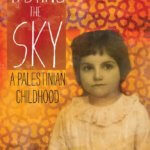
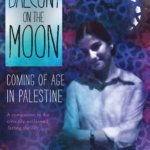 Tasting the Sky: A Palestinian Childhood and Balcony on the Moon: Coming of Age in Palestine by Ibtisam Barakat
Tasting the Sky: A Palestinian Childhood and Balcony on the Moon: Coming of Age in Palestine by Ibtisam Barakat
This two-part memoir of growing up in a high- conflict zone provides an illuminating, immediately accessible overview from a child’s point of view. In Sky, Barakat and her classmates are randomly detained at an Israeli checkpoint detention center during a routine school bus ride, prompting Barakat to recall events of 1967 Six-Day War and its aftermath. Balcony continues into her teenage years, combining everyday interactions with parents, siblings, and friends with the challenges of growing up surrounded by the constant threat of conflict and violence.
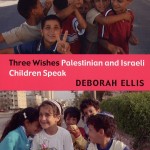 Three Wishes: Palestinian and Israeli Children Speak by Deborah Ellis
Three Wishes: Palestinian and Israeli Children Speak by Deborah Ellis
Best known for her Breadwinner tetralogy, Ellis is an award-winning Canadian author who has parlayed her international success to raise over a million dollars in royalties for Canadian Women for Women in Afghanistan and Street Kid International. Her epigraph here starts with numbers: “In World War I, 15 percent of all casualties were civilians. In World War II, 50 percent of all casualties were civilians. In 2004, 90 percent of all casualties in war are civilians.” In 2002, Ellis traveled to Israel and Palestine to speak to children. Unless you recognize a name, naming which ‘side’ these children are on is virtually impossible. Yanal, 14: “Being religious, whether you are Muslim or Christian or Jewish, or whatever you are, means that you should help people, and make the world better, and not just think of yourself. We have these things in common, at least in our religions.” Yibaneh, 18: “God has become unclear. He’s heading somewhere, but it’s hard to see how this will all come to a good end.” Mai, 18: “But now this wall is being built between us and them, and that will make it even harder for us to get to know each other as human beings. . . We will make our own peace, just as we made our own war.”
 Where the Streets Had a Name by Randa Abdel-Fattah
Where the Streets Had a Name by Randa Abdel-Fattah
When her grandmother falls ill, 13-year-old Hayaat decides that a jar of her ancestral soil—a mere six miles away—will encourage her grandmother’s recovery. But when home is a conflict zone, six miles might as well be 600: Hayaat is a Palestinian living inside heavily guarded walls in Bethlehem, her family forcibly displaced from her father’s home of many generations once filled with olive trees and open space. With her best friend in tow, Hayaat faces barriers, guard towers, and checkpoints, and heads toward Jerusalem with only a vague description of a long-ago neighborhood and a much-missed home. Despite childhoods stolen by violence, identities shaped by resentment and hatred, young people like Hayaat somehow manage to hold on to their humanity: “[So] long as there is life there’ll be love. . .I’ll do more than survive.”
 Young Palestinians Speak: Living Under Occupation by Anthony Robinson and Annemarie Young
Young Palestinians Speak: Living Under Occupation by Anthony Robinson and Annemarie Young
The Cambridge, UK-based creators of “A Refugee Diary” series traveled to Palestine to “give these young people an opportunity to speak.” Working with Palestine’s Tamer Institute for Community Education (2009 winner of the Astrid Lindgren Memorial Award—one of the most coveted prizes in children’s literature which also provides the most substantial monetary award—for promoting reading), Robinson and Young visited towns and villages in the Occupied Territories, and had to rely on video conferencing with children in Gaza. The children they meet are “just like young people everywhere.” The stunning differences are “the circumstances of their lives,” growing up in a country “where soldiers are ever-present, where [they] cannot move about freely, where [they] are not wanted.”
Young Adult
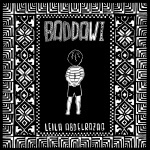 Baddawi by Leila Abdelrazaq
Baddawi by Leila Abdelrazaq
Palestinian-American activist Abdelrazaq prefaces her webcomic-turned-printed book: “I don’t draw Baddawi because this story is unique. I draw it because it is a common story that is not frequently told.” Palestinians, she explains, “make up the largest refugee population in the world, numbering more than five million.” Her father was one of those displaced, born in “Baddawi,” a Lebanese refugee camp, after his family’s Palestinian village was destroyed in 1948. Through her own extended history, Abdelrazaq draws poignant attention to refugees worldwide: “I see Palestinian refugees (and for that matter, refugees in general) portrayed as objects of suffering to be pitied, defined by circumstance, rather than subjects of their own individual narratives to be empathized with.”
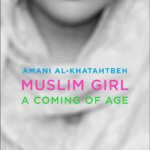 Muslim Girl: A Coming of Age by Amani Al-Khatahtbeh
Muslim Girl: A Coming of Age by Amani Al-Khatahtbeh
On September 11, 2001, nine-year-old Al-Khatahtbeh should have been enjoying Yearbook Day at her New Jersey elementary school. “That day has become crystallized in my memory,” Al-Kahatahtbeh writes, “not just for how harrowingly scary it [was]. . . but also because I deeply believe that my generation of Muslim millennials, has. . . come to be defined by it.” Al-Khatahtbeh, the daughter of a Palestinian refugee, underscores how “9/11 never ended for us”—the slurs, the discrimination, the targeting. With devastating insight, Al-Khatahtbeh bears witness to the pivotal experiences that led to her founding MuslimGirl.com, a highly successful social media platform dedicated to “pioneering our own paths as Muslim women living in today’s society.”
 The Wall by William Sutcliffe
The Wall by William Sutcliffe
In an unnamed conflict zone, 13-year-old Joshua lives in a new settlement community, Amarias, surrounded by a guarded, barbed-wired wall. One afternoon, Joshua discovers a hidden tunnel that takes him to the other side. Chased by a viciously angry mob of older boys, he’s saved by a young girl, Leila, who helps him return to Amarias. The Wall presents two communities living side-by-side, yet separated by a seemingly unbreachable divide. One brave boy attempts to make the great leap. Although countries remain unnamed, the fictional settlement, Amarias, is an anagram for Samaria, which today refers to the northern part of the West Bank. Sutcliffe, who describes himself as a “Jewish atheist,” told The Guardian in an April 2013 interview that after his participation at PalFest [Palestine Festival of Literature] in 2010, “everything I thought I knew about Israel was shattered. Seeing a military occupation up close, seeing a small number of people with guns telling a large number without guns what to do. . . it was so much more brutal than I thought it could be.” Writing The Wall was his response: he offers no easy answers, and leaves a wide berth for plenty of questions.
Published: The Booklist Reader, April 27, 2017
